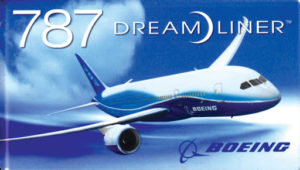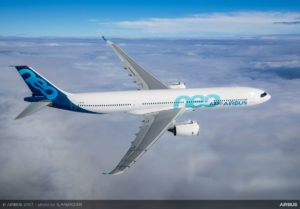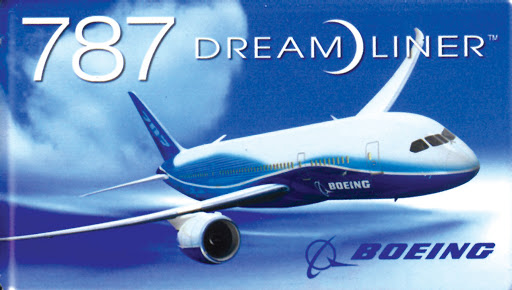Leeham News and Analysis
There's more to real news than a news release.
Updating Airbus and Boeing Orders At Risk
Subscription Required
By Vincent Valery
Introduction
Nov. 23, 2020, © Leeham News: It’s time to update the analysis on Airbus and Boeing orders at risk for delivery under the “weak customer” doctrine.
Under a US accounting rule known as ASC 606, Boeing must identify the number of orders that are unlikely to be delivered because the customer’s financial condition is weak. Airbus does not do this because there is no ASC 606 rule in Europe.
LNA wrote a few months ago an article that attempted to apply ASC 606 adjustments to Airbus’ order book.
Boeing publishes an estimation by the program of orders subjects to material cancellation risks, or ASC 606. The tally increased from 183 to 782 for the 737 between the end of 2019 and October 2020.
While Boeing has disclosed 1,020 net orders year-to-date canceled or subject to ASC 606 (393 canceled without accounting for ASC 606 adjustments), Airbus lists 308 net new orders. Airbus’ tally does not reflect a European equivalent to ASC 606 adjustments. The European OEM only publishes an overall outstanding value of its order book that accounts for customer risks in its annual report.
Despite last week’s news about progress on developing a COVID-19 vaccine, LNA’s Judson Rollins wrote that the timeline of a return to normalcy remains elusive. The lingering pandemic means that more airlines will run into financial difficulties, resulting in more orders that will be deemed risky.
LNA provides an updated tally of the orders at risk for both Airbus and Boeing, with minor changes to the methodology.
Summary
- Identifying customers at risk;
- Explaining differences with Boeing’s ASC 606;
- Applying adjustments to Airbus’ order book;
- Estimation of adjusted market shares;
- A digression to tariff exposures.
Enhancing the Dreamliner, Part 7: The optimum range for the 787-10
Subscription Required
By Bjorn Fehrm
Introduction
November 19, 2020, © Leeham News: Last week, we compared the economics of the 787-10 to the 787-9 on the San Francisco to Sydney route.
We could see this 6,500nm route does not suit the 787-10, even though it’s within the aircraft’s range capability. The 787-9 is the better alternative.
We now compare the aircraft on the 4,500nmm San Francisco to Tokyo route, a distance that should suit the 787-10 better.
Summary
- The 787-10 can fly routes of up to 6,500nm, but its payload capability gets compromised.
- You can fill the cabin to a reasonable load factor but must leave all cargo behind. In a high yield cargo market, this is not a profitable proposition.
- When the routes are below 5,000nm, the 787-10 works better. Now the large capacity can be utilized both for passengers and cargo. If it can be filled it’s now the lowest cost Dreamliner.
Boeing, unions need reset: analysis
Subscription Required
By the Leeham News Team
Analysis
Introduction
Nov. 16, 2020, © Leeham News: Boeing is at a defining moment, says John Holden, the president of IAM 751. This is the labor union that assembles Boeing’s airplanes in Washington State.
The Seattle Times wrote that “Boeing must realign for better days“.
Neither said anything that hasn’t been said before, some of them repeatedly.
There is a new twist to it this time. Boeing is seriously bleeding money. It is making changes for survival and paying a horrible price as it loses talent that takes years to develop. There are many losers here: Boeing, Washington State, Snohomish, King and Pierce counties, Everett, Renton and all the communities in the Washington Aerospace heartland. There are no winners.
But for all the points identified, few offer solutions. What should a realignment include? What could it look like?
Over a series of articles, LNA will examine some possible solutions.
The first is Labor, starting with the IAM 751.
Summary
- Long, tortured relationship.
- Strong union state.
- “Expensive labor.”
- Is there a “value” premium?
Enhancing the Dreamliner, Part 6: The 787-10 analyzed
Subscription Required
By Bjorn Fehrm
Introduction
November 12, 2020, © Leeham News: We look deeper at the 787-10, the stretched Dreamliner. The 787-10 was conceived as a “cut and stretch” of the 787-9, leaving as many parts untouched as possible. It carries 40 more passengers, but over a shorter distance.
It’s a high capacity complement to the other Dreamliners for airlines that needed more seats and could sacrifice about 1,500nm in payload-range performance. To check how well this works, we run the 787-10 against 787-9 on the San Francisco to Sydney route from last week and look at the data.
Summary
- The 787-10, as a “cut and stretch” development from the 787-9 comes with compromises on long routes.
- Our San Francisco to Sydney example shows these limitations in practice, even with the rumored Gross Weight stretch of the latest sales to Air New Zealand.
- The 787-10 comes into its own on shorter routes. We look at this next week.
Boeing needs 737 replacement launch by 2026 if not sooner
Subscription Required
By Scott Hamilton
Introduction
Nov. 9, 2020, © Leeham News: Boeing needs hundreds of new orders for the 737 MAX and/or a new replacement program launch by 2026, if not sooner.
An analysis shows that 737 deliveries tank by 2028.
This isn’t just about the 737-10 and 737-9, which don’t fare well against the Airbus A321neo. The shrinking backlog is the problem.
Ryanair’s CEO, Michael O’Leary, said last week Boeing will delay delivery/entry into service of the 737-10 MAX by up to two years.
This largely stated the obvious.
The first 10 MAX rolled out of the factory Nov. 22 last year. It could not enter flight testing because the MAX family was grounded March 13. The MAX remains grounded. Recertification may come this month, but it appears more likely next month.
This delays the start of flight testing until probably January. This is a 14-month delay.
Flight testing will take a year to 15 months, or to January to March 2022—about two years after the planned EIS. Boeing’s production ramp up will further impact delivery of the 10 MAX.
Although some recent new focus was on the 10 MAX, the larger issue is the entire 737 family.
Summary
- Production ramp up will be slow.
- Inventory will take two years to clear.
- Airline demand is poor the next 2-3 years.
- Boeing’s breadwinner sees major delivery drop from 2026.
- A further drop by 2028 demonstrates need for a 737 replacement—not just an A321 competitor.
Enhancing the Dreamliner, Part 5: 787-10
Subscription Required
By Vincent Valery
Introduction
Nov. 5, 2020, © Leeham News: After analyzing the 787-9, we now turn our attention to the last Dreamliner variant that entered into service, the -10.
The 787-10 was developed as a minimum change stretch of the 787-9. Keeping it at the same gross weight as the 787-9 meant it could share the same wing and landing gear, yet offer a higher capacity. The longer fuselage meant higher empty weight and drag so the range of the -10 was cut compared with the other Dreamliners.
Summary
- Maximizing commonality by trading range for volume;
- Limited near-term replacement market;
- A case for further enhancements;
- Payload limitations on a long-haul route.
Enhancing the Dreamliner, Part 4: the 787-9 analyzed.
Subscription Required
By Bjorn Fehrm
Introduction
October 29, 2020, © Leeham News: We look deeper at the 787-9, the most successful member of the Dreamliner family. It’s 50 seats larger than the 787-8 but shares the same wing dimensions and engines.
The 787-9 quickly overtook the smaller 787-8 in sales and deliveries once its performance was clear to the airlines.
By following on the 787-8 it could benefit from many enhancements in design and production, becoming a very efficient aircraft in the process. To check its efficiency we run the 787-9 against its predecessor, the Boeing 777-200ER, on the San Francisco to Sydney route and look at the data.
Summary
- The 787-9 enjoyed all the improvements that came to light when developing the 787-8. The result is one of the most efficient twin-aisle aircraft on the market.
- Why it’s popular with the airlines becomes evident when we compare with the aircraft it replaces, the 777-200ER.
Public data doesn’t support Airbus A320 production rate hike
Subscription Required
Introduction
By Scott Hamilton
Oct. 26, 2020, © Leeham News: Airbus’ 3Q2020 earnings call is Wednesday. News emerged last week the OEM is notifying supplies that they should be prepared to increase production of the A320 from 40/mo to 47/mo in the second half of next year.
It is worthwhile looking at the delivery skyline as it currently exists.
Summary
- Forecasted delivery stream doesn’t support rat 47/mo until 2024.
- Airbus appears to be banking on faster recovery from COVID—or
- Picking up market share from Boeing.
Enhancing the Dreamliner, Part 3: 787-9
Subscription Required
By Vincent Valery
Introduction
Oct. 22, 2020, © Leeham News: After analyzing the 787-8, we now turn our attention to the following Dreamliner variant that entered into service, the -9.
Summary
- Lessons learned from 787-8 mishaps;
- A resounding commercial success;
- Some in-service drawbacks;
- Competition limits pricing power;
- An ultra-long-haul route.
Twin Aisle Deliveries: The Good, the Bad, and the Ugly
Subscription Required
By Vincent Valery
Introduction
Oct. 19, 2020, © Leeham News: LNA published last week an update on the latest 737 MAX production and delivery plans. This week, we turn our attention to the twin-aisle programs at Airbus and Boeing.
Both OEMs announced significant monthly production rate reductions earlier this year: the Dreamliner will go to six next year. The Airbus A350 is at five per month, while the A330 and Boeing 777 are at two. Airbus and Boeing will publish their third-quarter earnings later this month, which could include updated production rates.
LNA investigates the implications of the updated production and delivery plans for twin-aisle programs at Airbus and Boeing.
Summary
- Two programs in acceptable shape;
- Awaiting an elusive return to favor later this decade;
- A lack of healthy customers make the situation critical;
- Summing it all up with one metric.



